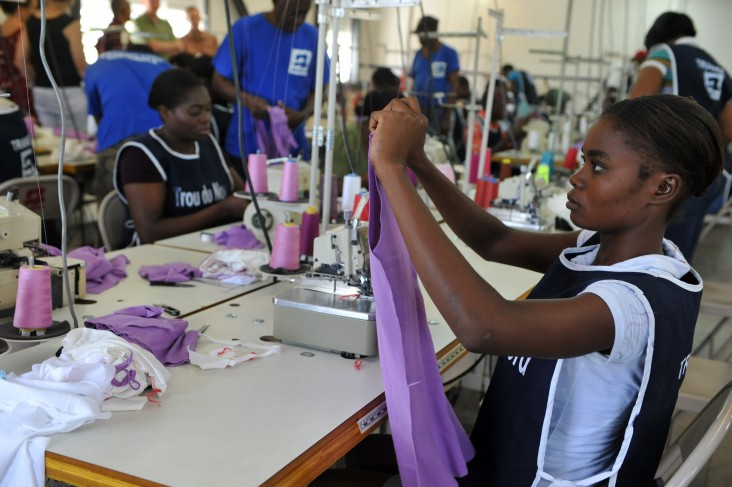
Overview
Economic Growth & Trade Fact Sheet March 2017 ![]() (pdf - 282k)
(pdf - 282k)
Roughly 2.5 million Haitians live in extreme poverty (below $1.25 per day), predominantly in rural areas. The economy is largely informal and heavily dependent on small family farms. However, agriculture has languished in the face of growing rural population pressures, recurrent natural disasters, extreme weather events (e.g. droughts), and farmers’ limited access to information, modern technology and practices. Haiti can also be a difficult place for businesses to thrive, ranking 181 of 190 on the World Bank Ease of Doing Business Index. Despite these challenges, Haiti has experienced some positive economic growth in recent years. Additionally, agricultural potential for domestic and export markets is promising, and an important driver of growth.
USAID Strategy and Activities
In the agricultural sector, USAID’s strategy focuses on sustainably increasing farmers’ incomes through measures that increase productivity through the introduction of better inputs and improved technology, stabilize the hillsides above productive plains and strengthen agricultural markets through better access to domestic and international markets. USAID also makes farming more profitable by helping farmers to process staple crops, like corn, rice, bean, plantain, as well as cash crops such as cacao and mango.
Improving food security: Through the Feed the Future initiative, USAID fosters improved agricultural productivity, sound natural resource management, and modernization of post-harvest marketing and processing, ensuring product availability in markets and more income to farms and businesses within those value chains. For example, USAID has introduced new rice farming techniques and new production, processing, and marketing methods for cacao. USAID has also significantly strengthened farmers’ profits by linking farmers’ associations directly with end buyers.
Creating more productive value-chains for MSMEs: Improving and strengthening activities along the value chain is a key USAID priority designed to increase output, incomes, and employment in Haiti. USAID provides vocational training as well as practical skills for the workplace and business management. Additionally, USAID offers additional incentives to financial intermediaries to facilitate easier access to equity money and bank loans to small and medium enterprises (SMEs). USAID supports the creation of full-time, formal-sector employment in key sectors, including agribusiness, apparel, and construction.
Developing public-private partnerships: USAID is leveraging partnerships with the private sector in Haiti to improve social and economic conditions as well as to deepen the Agency’s development impact. These public-private partnerships projects include: a health project called REPARE that partners with St. Boniface Haiti foundation, Kellogg Foundation, and the GE Foundation to repair biomedical equipment; and an agricultural project with a local Heineken subsidiary BRANA that helps about 18,000 farmers increase yields for sorghum.
Related Links
- Haitian Startup Succeeds While Answering Need for Cleaner Cooking
- Haiti’s High-Tech Revolution: The ‘New Model’ in Action
- Four Years After the Earthquake, a Road to Market for Haitian Mangoes
- Generating Income While Keeping Streets Clean in Haiti
- Sharing Microfinance's Best Practices
- Microfinance's Next Generation








Comment
Make a general inquiry or suggest an improvement.